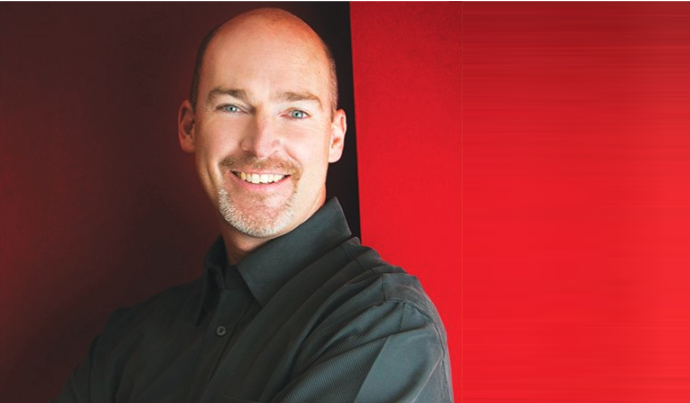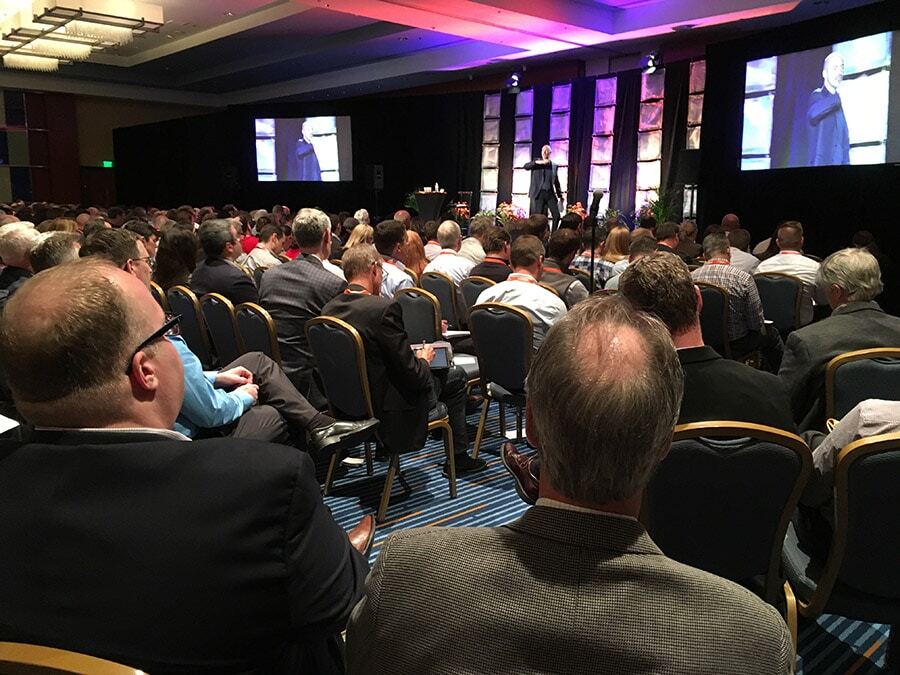
Articles
EOS Founder on How To Design The Perfect Business
March 10, 2022

Entrepreneur and business extraordinaire Gino Wickman knows a thing or two about building a successful business.
Here at The Manual, we're big fans of Gino. He's the founder of EOS Worldwide, which has helped over 130,000 companies get what they want from their businesses. And he's the author of multiple entrepreneurial books, including the best-seller "Traction: Get a Grip on Your Business", which has sold over 1M copies.
Gino recently joined Trainual CEO Chris Ronzio at Playbook 2021. There, they talked about Gino’s latest book, "The Entrepreneurial Leap", which gives people a heads up on what it takes to be an entrepreneur.
In the session, Gino broke down the three simple choices entrepreneurs have to make when figuring out their perfect business, and how leaders can determine if their business is the right fit for them.
1. Industry
When asked about the first choice one should make before starting your business, Gino starts with industry. AKA your business’ category, which includes anything from construction to animal production.
The U.S. Bureau of Labor Statistics has sorted the industries into over 100 different categories. And if you consider the range of subcategories for each industry, you’re looking at hundreds and hundreds of options.
So, when you start off as an entrepreneur, you’ve got options. There are many different paths you can take when starting a business, and according to Gino, you want to “decide the industry you’re drawn to.”
Because if you’re going to be focused on your business for years and years to come, you want to pick an industry you’re passionate about. For example, Gino chose to start his business in the education industry because he loved teaching new ideas to others.
“You [might] bounce around between five different industries for the next five years, and that’s okay. To move forward, just try stuff and go to work.”
<blockquoteauthor>Gino Wickman, author of Traction and The Entrepreneurial Leap<blockquoteauthor>
But how do you know which industry is the right one for you? It comes down to exposing yourself to different experiences. Find an industry that excites you and go to work or intern for companies in that industry.
You may find the perfect industry for you on day one. Or you may find it takes a little time to get that perfect fit. Take advantage of new opportunities until you find the best industry for you.
2. Type of business
Once you’ve found the industry that you’re excited to work in, you need to decide on the type of business you want to run. And that decision will depend on a few different factors:
Product or service?
Are you a product entrepreneur or a service entrepreneur? Meaning, are you going to sell physical goods or intangible services? Just like with industry, you need to determine which type you prefer. You don’t want to start a business doing something you dislike.
Gino sees himself as a service entrepreneur. When he started working for his family’s business, he realized that product distribution wasn’t the type of business for him. So, Gino moved away from selling products to focusing solely on selling his teaching services.
But sometimes, your business may become a combination of both product and service. While you can attempt to take charge of both sides, product business and service businesses each have their own complexities. Even if you enjoy aspects of both types of business, it’s much simpler to master one.
While Gino’s service business began as a way to educate other business leaders, it evolved to also selling copies of his entrepreneurial books. Because he dislikes working on the product side of the business, Gino outsources the book publication and distribution to other companies. That way, he can focus on his work as a service entrepreneur.
Decide whether you’d like to pursue selling products or services. And if your business sells both, consider partnering with another company or business leader who can take care of one aspect of the business.
B2B or B2C?
Consider the type of customer you want. Do you want to sell to other businesses (B2B)? Or directly to consumers (B2C)? Because depending on who you’re selling to, the marketing and sales processes are completely different.
Think about it: selling your service to the CEO of a company is going to be very different from selling a product to someone who walked into your store from the street. For a CEO, you might need to prepare a whole presentation on why your business is the best choice. For an everyday consumer, it can come down to the customer service you provide.
So, as with every other choice you need to make as an entrepreneur, it comes down to what you love. “Do you love selling to businesses, or do you love selling to consumers?” Gino asks. “Are you more of a client business or more of a customer business?”
Gino is a B2B man. He enjoys the intimacy and engagement of working with 15 to 20 business clients. He’s tried the B2C route before. “It freaks me out to think, 'how do I see 10,000 people?'” he explained. “It overwhelms me. But we’re all different.”
Demographic, geographic, and psychographic?
Once you’ve decided on the type of customer you want, you need to think about their ideal profile. Meaning, who is the target market for your business?
Here are the three factors you need to consider:
- Demographic: Who are your customers? Consider factors like age, gender, and race.
- Geographic: Where are your customers? How far do you want your business to reach — city-wide, state-wide, nationwide, worldwide?
- Psychographic: How do your customers think? What do they want from your business?
If your goal is to sell your product or service to the 7.7B people on planet Earth, your scope is probably too wide. The point of determining your ideal customer is to create a specific target field.
“Try to narrow in on as tight of a target market as possible, and then put all of your energy, dollars, and focus on that target market. You will absolutely sell more.”
When you have your audience in mind, it’ll be much easier to figure out how to market your business.
High price or low cost?
To gain revenue and become a successful business, you need to set prices for the goods or services you’re selling. According to Gino, there are two ways you can determine that: high price or low cost.
AKA is your business going to produce goods or services at a low volume and sell for a high price? Or sell a high quantity for a low cost?
There isn't a right or wrong answer to that question. Gino is the type who wants to sell a high-quality service at a high price. He enjoys having fewer clients so he can provide the best service for the highest value.
Other types of businesses can’t be successful by selling at a high price. Take a light bulb manufacturer, for example. They sell cheap light bulbs at a tiny profit, but they can still make huge revenue by selling millions of bulbs.
With just a few decisions to make, you can perfectly determine the best type of business for you.
3. Size
The last choice you need to make for your business is the size. We’re talking about what you want your valuation to be and the number of employees you hire.
Every entrepreneur is different, and they can start businesses of all shapes and sizes. “Building a billion-dollar tech unicorn is not the only option [for] an entrepreneur, [but] that’s what the world is being sold,” Gino explained.
So you need to consider what size business will work best for you — whether it’s a multi-billion dollar company with thousands of employees or a smaller multi-million dollar business with 10 employees. Would you prefer to oversee a massive operation or take a hands-on role at a small business?
You have to choose the work you’ll enjoy more. If you’re not attracted to the idea of a massive corporation, don’t feel obligated to go for that idea. You don’t need massive revenue to generate good profits.
A $2M company with 50% profit is going to make the same amount as a $100M company with 1% profit. (You can check our math, but we’re pretty sure they both make $1M).
And let’s say you do try to go for that $100M company. If you find yourself growing miserable with the logistics of running such a large business, there’s no shame in scaling back to a size that works better for you.
In Gino’s words: “once you realize it’s okay to be proud of this $2M company and [you can] maximize that $2M company to impact the world, there’s so much freedom in that.”
The business you want to start is your business to enjoy. So choose the options that will make you the happiest entrepreneur.
What about my current business?
Even if you’ve already started a business, you can still benefit from Gino’s tips. For anyone who’s really struggling with their company, it's not too late to step back and assess what could be wrong based on these three categories.
Are you enjoying the work you do in your industry? Do you have the right type of business for your needs and interests? Are you operating at the right size?
And even if you answered “no” to any of these questions, every element of your business can be changed. “You get to reinvent yourself and figure out the perfect industry and type of business for you,” Gino stated.
There’s nothing wrong with trying something for a few years and pivoting once you realize where your true passion lies. And given 5% of small businesses fail because due to lack of passion, you want to make sure you enjoy what you do.
So, whether you’re looking to start your perfect business or reassess the business you have, you have a few choices to make. And if you’re not sure where to start, Gino’s MyBiz Match tool can help you determine the best industries for you to try, along with the types of business that might fit you best.
Similar Blog Posts










